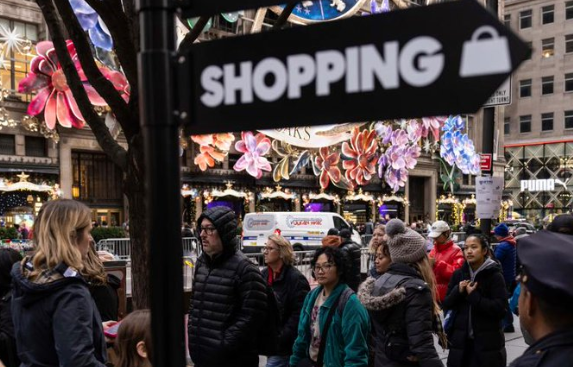The economy is set for a fall now that people have exhausted their savings, and credit card debt is at an all time high. So now, spending will decrease since everyone is out of money.
Retail sales in May increased at a slower-than-expected pace, highlighting the ongoing impact of high interest rates and inflation on consumers. The Commerce Department reported a modest 0.1% rise in retail sales, falling short of the 0.3% increase predicted by economists. This follows a revised 0.2% decline in April.
When excluding autos and gas, retail sales also grew by 0.1%, which was below the anticipated 0.4% increase but better than the 0.3% drop seen in April. Paul Ashworth, Chief North America Economist at Capital Economics, commented that the data reflects consumers struggling, supporting the view that GDP growth remains weak in the second quarter following a disappointing first quarter.
May retail sales slow to 0.1% increase, below expectations https://t.co/yL926oCutD
— UPI.com (@UPI) June 18, 2024
The report detailed sector-specific performances, showing that gasoline stations experienced a significant decline of 2.2% from the previous month, while sales at furniture and home stores fell by 1.1%. Conversely, sporting goods and hobby stores saw the largest gains, with sales rising by 2.8%.
Michael Pearce, Deputy Chief US Economist at Oxford Economics, noted that consumer spending is slowing due to moderating real income growth and increased credit constraints amid high interest rates and rising credit card usage. Despite these concerns, some analysts downplayed the implications of the May data.
The retail sales control group, which excludes volatile categories and influences the quarterly GDP reading, increased by 0.4% in May. Matthew Luzzetti, Chief US Economist at Deutsche Bank, described this as a “decent print,” highlighting that the control group has recorded its largest gains since December over the past three months. Luzzetti acknowledged that consumer activity is slowing but viewed it as a return to a more normal economic pace rather than an alarming trend.
US Retail Sales Slow Slightly in March https://t.co/CYGa5yCcnW pic.twitter.com/5EmtHRGIEh
— DCLA Diamond Exchange (@DCLADX) April 16, 2024
This retail sales report comes shortly after the Federal Reserve’s revised Summary of Economic Projections (SEP), which anticipates one interest rate cut this year. The commitment to maintaining high interest rates longer than expected has raised concerns among economists about a potential significant slowdown in the US economy.
Retail sales slow as consumers pull back on spending with high inflation and rates pic.twitter.com/AQtP9qU6Yd
— Good Morning Asheville (@goodmorningavl) June 18, 2024
Mohamed El-Erian, Chief Economic Adviser at Allianz, warned that the balance of risks for the Fed could result in delaying rate cuts too long, potentially causing the economy to slow more than necessary. Market expectations for a September interest rate cut have increased, with the likelihood rising from 52% last week to 67% on Tuesday, according to the CME FedWatch Tool.
Key Points:
i. Slower Growth: Retail sales in May increased by 0.1%, below the expected 0.3% rise, following a 0.2% decline in April.
ii. Sector Performance: Gasoline stations and furniture stores saw declines, while sporting goods and hobby stores experienced gains.
iii. Economic Implications: The data suggests consumers are struggling due to high interest rates and inflation, with real income growth moderating and credit constraints increasing.
iv. Mixed Analyst Views: Some analysts see the slowdown as a return to normal economic activity, while others are concerned about potential broader economic impacts.
v. Federal Reserve Concerns: The report follows the Fed’s projection of maintaining high interest rates, with market expectations for a rate cut in September increasing significantly.
James Kravitz – Reprinted with permission of Whatfinger News



